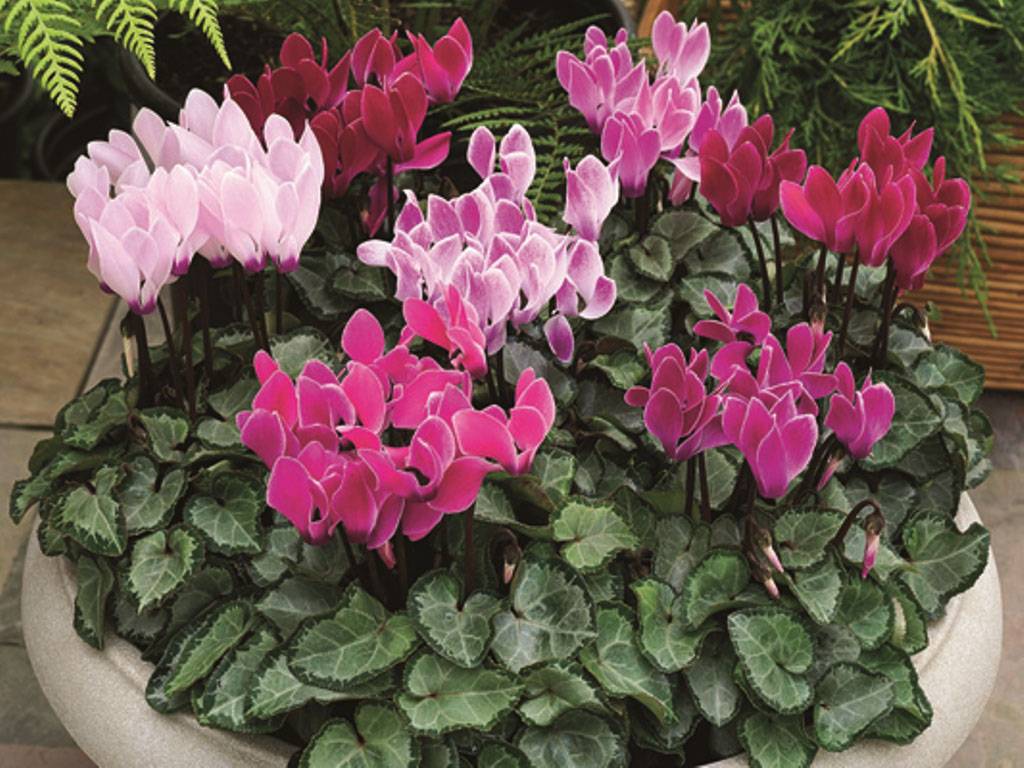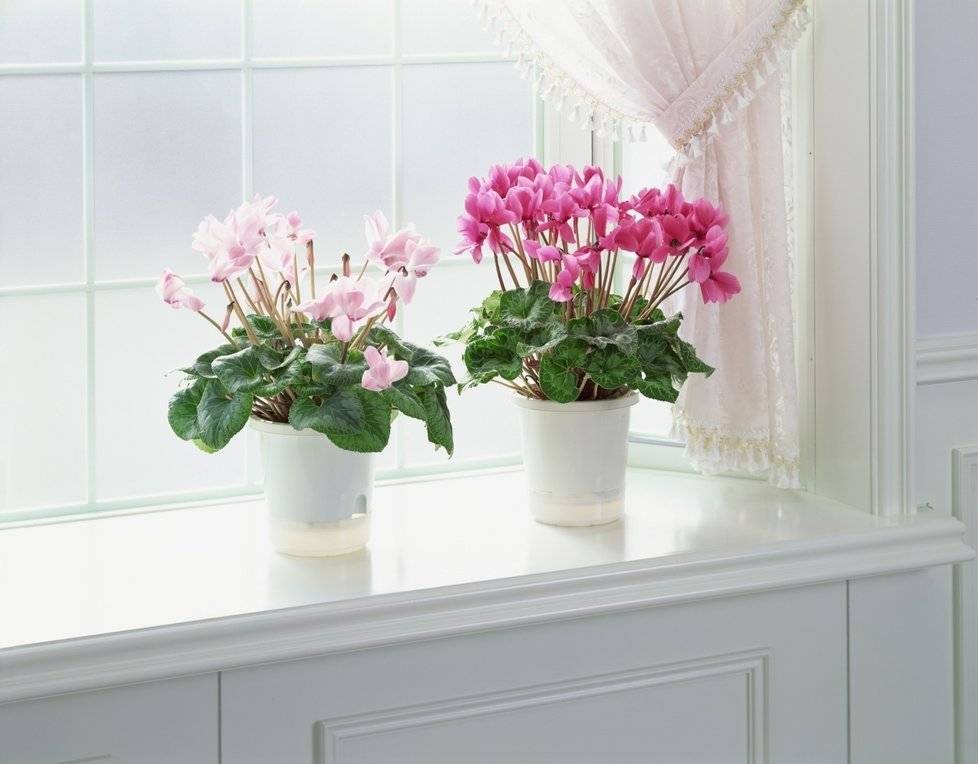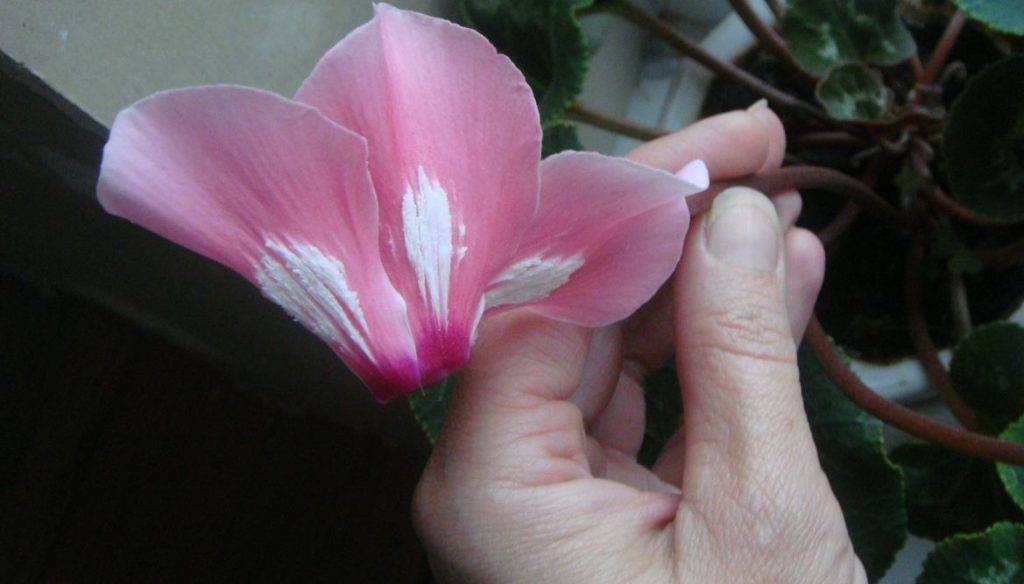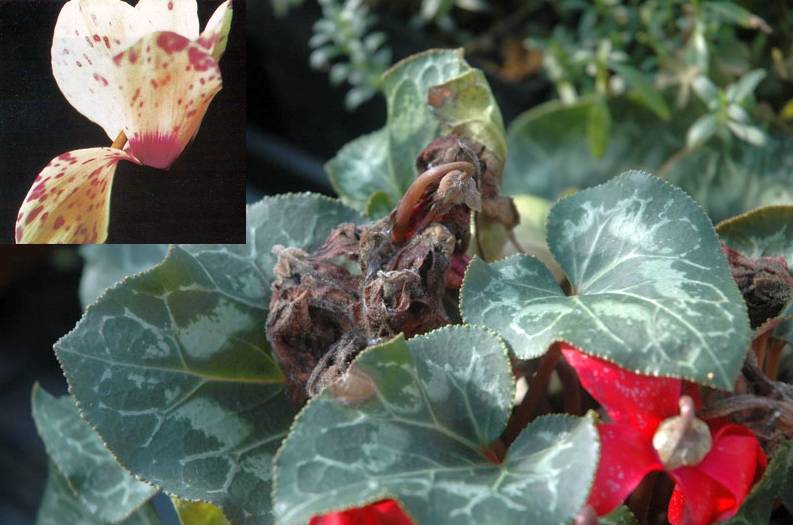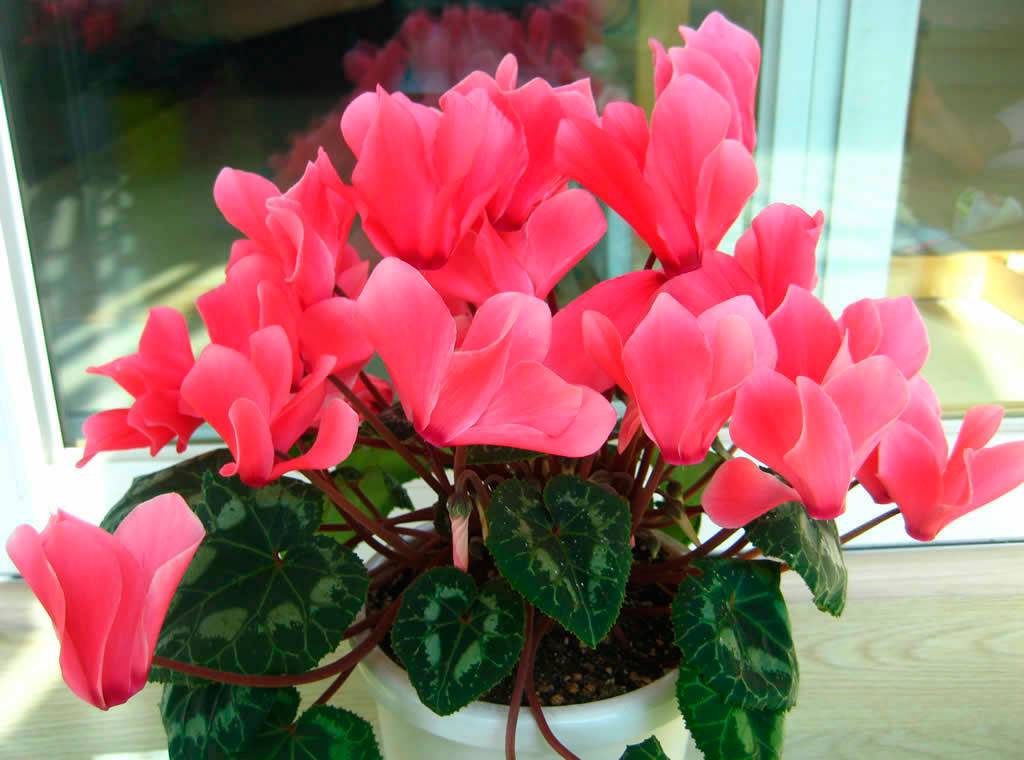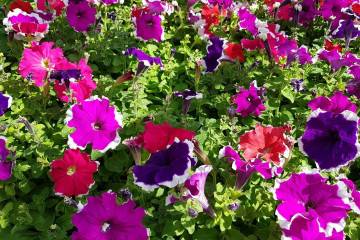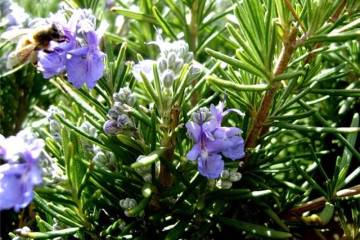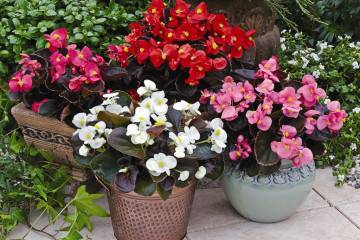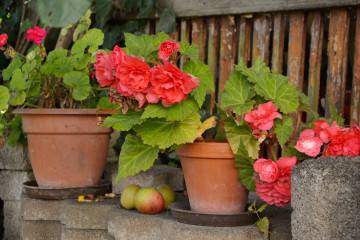Persian cyclamen - growing and care
Content:
Persian cyclamen is a compact flowering plant that is grown in a room. It stands out for its heart-shaped leaves, beautiful flowers of various shades.
Persian cyclamen - what is this flower
It is a perennial herb with tubers on its roots. It is also called alpine violet, dryak. Belongs to the genus cyclamen, the Mirsinovy family. Some sources attribute the plant to Primrose.
Brief description and history of origin
It reaches a height of 0.3 m. Tubers are flat-rounded, they are up to 15 cm in diameter, have a single growth point.
The leaf plates are basal, orbicular. They are located on elongated petioles. The leaves are green or dark emerald with a silvery or gray pattern.
At first, he dissolved inconspicuous whitish small flowers. Thanks to the hard work of breeders, the plant has become decorative with beautiful buds of various shades. Now the culture is grown by flower growers all over the world.
How to care for Persian cyclamen at home
Persian cyclamen does not require special care. Difficulties can arise only when ensuring the required temperature.
Illumination and temperature conditions
Indoor flowers grow well only in a cool room. During the daytime, the temperature should be no higher than 12-15 ° C. At night, it needs to be lowered to 10 ° C. If the temperature rises to 20 ° C, this can be a signal to dive into a resting state. Because of this, the bush will turn yellow, shedding buds and leaves. During the resting period, the temperature should be constantly in the range of 18-25 ° C.
The flower needs light, bright, but diffused. Cyclamen must be protected from direct sunlight, as they can cause burns.
Watering rules and humidity
The soil must be moistened when the top layer dries up (at intervals of about 1 day) with a moderate amount of warm water. Watering should be done along the edge of the pot so that drops do not fall on the tubers and leaves. You can also place a container with a bush in a tray with water at room temperature for 15-20 minutes.
Air humidity should be medium to high. To create an optimal environment in the room, you can install a humidifier, put a basin with wet pebbles or expanded clay next to the cyclamen pot, periodically spray the room, avoiding drops on the flower.
Top dressing and soil quality
A ready-made substrate for bulbous houseplants can be purchased at a flower shop. You can also cook it yourself from peat, sand, humus (mixed in equal parts).
Liquid fertilizers with a small amount of nitrogen should be added to the irrigation water.After the purchase, top dressing is applied in a month, and during the growth of new greenery - once every 10-14 days. When budding and flowering, you need to use complex mixtures with a phosphorus content 2 times a month.
Flower container size
The cyclamen pot should not be too large or small. In the first case, soil acidification will begin, which will lead to root rot, a stop in development. Since the root system of a plant grows very quickly, if you use too small a container, another transplant will soon be necessary.
For a one-year, two-year-old bush, a pot with a diameter of 8 cm is suitable, for a three-year-old or more - 14-16 cm.When choosing a container, you need to pay attention to no more than 2-3 cm between the walls and roots.
Pruning and replanting
For the first time, the transplant should be carried out a few days after purchase, when the flower adapts to the new environment. Step by step process:
- Put drainage on the bottom of a new pot, pour a little substrate.
- Carefully remove the bush, straighten the rhizome.
- Place in a new pot exactly centered.
- Cover with soil so that a small part of the bulb remains on the surface.
- Water the plant.
- Fertilize after 20 days.
Pruning the house should be done in the fall to preserve its decorative appearance and further active development. Also, during transplantation, it is necessary to remove dry and diseased leaves.
Features of flowering plants
The vegetative period of the flower is different from many other plants.
A period of activity and rest
The period of active growth occurs in the fall. Flowering begins in winter or spring, depending on the variety. In summer, the flower is dormant.
Types and shape of flowers
Flowers are solitary, bisexual, drooping. They are located on elongated peduncles. Flowers can be of various shades: white, pink, burgundy, dark red, purple.
Flower reproduction methods
Seeds can be sown at any time, but it is better to do this at the end of summer. The temperature in the room should be no higher than 15-18 ° C. Tuber propagation is recommended when the bush is dormant.
Seed propagation
Step by step process:
- Place the seeds in a gauze bag soaked in a growth accelerator for 12 hours.
- Spread over the surface of the wet substrate so that 4 cm remains between the seeds. It is not necessary to deepen.
- Sprinkle the earth on top with a layer of 1 cm.
- Cover with glass or cling film to create a greenhouse environment.
- After the emergence of shoots, remove the shelter.
- After 3 months, when real leaves and tubers appear, dive into separate containers.
- After 3 weeks, add ammonium sulfate, after another 14 days, feed with potassium sulfur.
Reproduction by dividing the bush
With this method of reproduction, the tuber is divided into parts. This is the most important and vulnerable part of the plant, so the procedure is quite extreme. Step-by-step actions:
- Water the flower in 24 hours so that the tubers can be easily removed from the substrate.
- Dig in the root system, rinse with warm, settled water, clear from the earth.
- Disinfect a sharpened knife with a thin blade.
- To minimize injury, cut the tuber into only 2 pieces (maximum 4). Each division should have 1 growth point and a heel from which young shoots grow.
- Dry the planting material for 2-4 hours.
- Treat the cuts with wood ash. Leave to dry for another 18 hours.
- Place the cut in the center of a disinfected pot with a damp substrate, without deepening. Sprinkle on top with a thin layer of soil.
With careless actions, the delenka can begin to rot, and the likelihood of the death of the mother bush is also high.
Growing problems, diseases and pests
In case of care errors, the following problems may arise:
- flowers develop under the leaves. Improper watering is the reason. The problem arises both with excessive moisture and when the earthen coma dries out;
- deformed buds on pathologically short peduncles. The reason is defeat by thrips;
- eaten sheet plates around the perimeter - the work of the furrowed skosar;
- early yellowing of greenery is a fungal disease that occurs due to excessive moisture.
Cyclamen can infect the following pests: cyclamen or strawberry mites, thrips, furrowed mites, aphids, nematodes. The plant is affected by diseases such as rust, black leg, fusarium, root and tuber rot.
If problems arise (yellowing of foliage, pathological development of flowers, etc.), you need to take better care of the plant. In case of damage by pests and diseases, it is necessary to purchase specialized preparations and process them.
Caring for Persian cyclamen is slightly different from the maintenance of other common indoor plants. Its flowering occurs in the autumn-winter season, when most of the other crops are dormant. A flower needs coolness for good development, otherwise the care is practically no different from the classic one.
